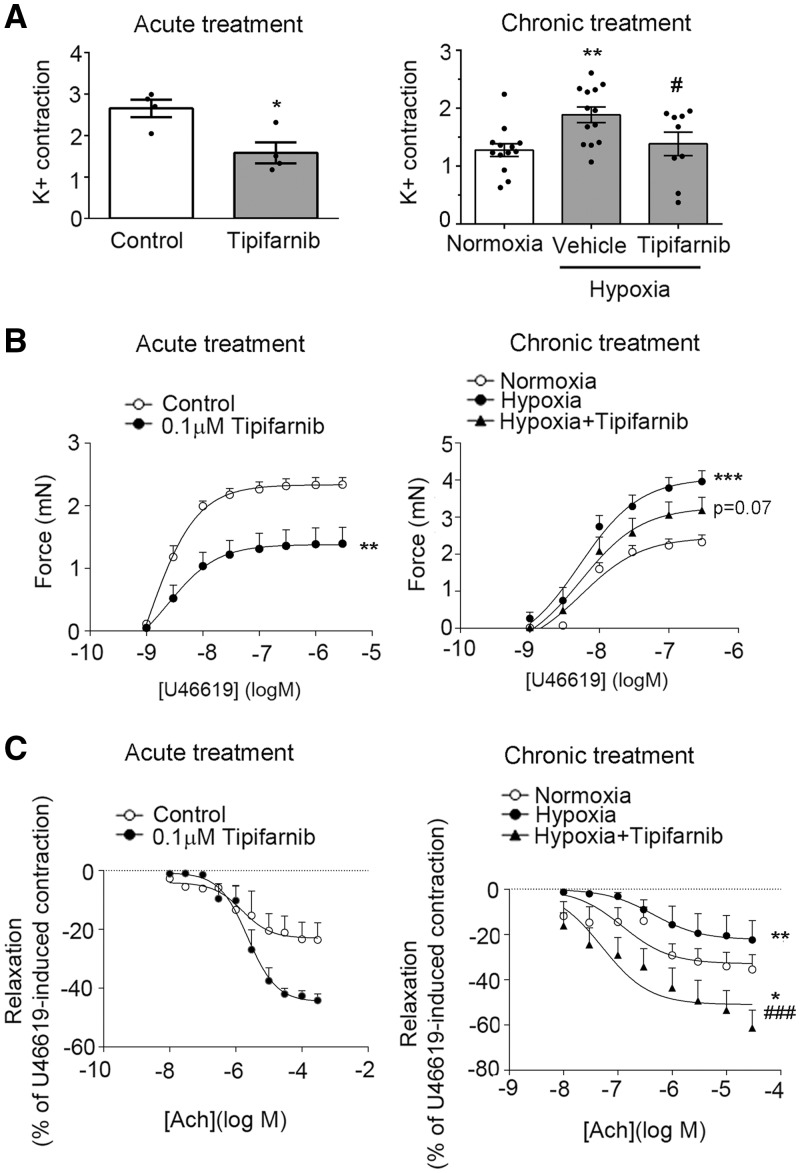Figure 3.
Tipifarnib increases endothelium-dependent relaxation of pulmonary arteries. In (A–C) graphs on the left show reactivity of intrapulmonary arteries pretreated for 2 h with 0.1 μmol/L tipifarnib (Acute treatment), while graphs on the right show reactivity of intrapulmonary arteries isolated from normoxic, hypoxic and hypoxic tipifarnib-treated mice (Chronic treatment). (A) Contraction to high potassium solution; (B) contraction to U44162; (C) relaxant response to acetylcholine. Values are means ± SEM of n = 4 for acute treatment and n = 8–12 for chronic treatment. 0% relaxation corresponding to the level of precontraction induced by 3 x 10 −6 mol/L U44162. Statistical significance was determined using a (A) unpaired t-test or (B, C) a two-way ANOVA with repeated measures and a Bonferroni post-hoc test. *P < 0.05, **P < 0.01, ***P < 0.001 vs. control; #P < 0.05, ###P < 0.001 vs. hypoxic control.

